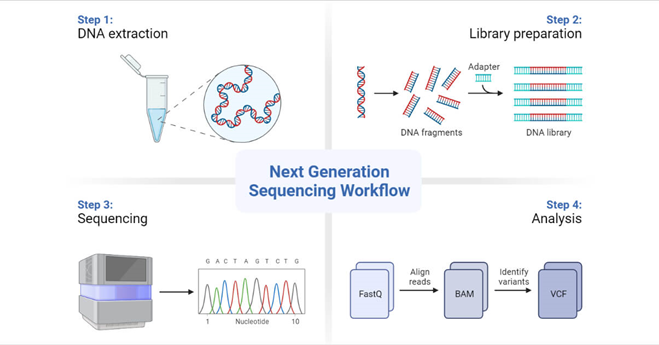WILL UNDERSTANDING CANCER BECOME A DATA PROBLEM?
Relevance: GS 2 – Health, Government Policies and Intervention
Why in the News?
- The World Health Organization (WHO) reports approximately 33,000 new cases of brain cancer annually in India.
- The Global Cancer Observatory 2020 ranks brain cancer as the 19th most common type of cancer.
- Behind these alarming statistics, countless stories of pain and unrest unfold.
About the diagnosis
- Families endure the pain and uncertainty of caring for loved ones who may never recover.
- There have been significant breakthroughs in oncology research worldwide.
- Current Diagnostic Challenges:
- The current standard of care for diagnosing cancer often requires invasive and risky procedures, such as surgeries to extract tissue samples for analysis.
- Risks from these procedures range from short-term paralysis to death.
- Hope for Easier Diagnosis:
- The use of data analytical tools can ease the process of diagnosis. This advancement is likely to reduce risks, discomfort, and pain for patients and their families.
- Innovations and solutions at the intersection of healthcare and technology will benefit both patients and medical professionals.
- Can we make diagnosis easier for patients and their families? The answer is a resounding yes. The solution lies in our genes.
Basic Science of Genes:
- We all learned about genes, DNA, and RNA in high school science.
- These are the fundamental building blocks of life, shaping our traits and health.
- Today’s science links people’s genes to their susceptibility to diseases like cancer.
Understanding Mutations:
- Imagine you have a recipe for a sweet dish. If you accidentally write “salt” instead of “sugar,” the dish will turn out very differently.
- Similarly, DNA is like the recipe for making and maintaining our bodies.
- A mistake in the DNA code, called a mutation, can change how our cells behave.
- Just as the wrong ingredient alters a recipe, a DNA mutation can change cell growth and function, sometimes leading to cancer.
- Importance of Identifying Mutations:
- It is crucial to understand the mutations in genes that cause cancer.
- Research indicates there are close to 3,000 cancer-causing genes.
- Each gene contains thousands of DNA codes, each potentially holding vital information about cancer development.
- Challenge of Data Analysis: The sheer volume of data analysis for identifying these mutations can be overwhelming and seemingly impossible for humans.
Next-Generation Sequencing (NGS):
- Enter Next-Generation Sequencing (NGS), a cutting-edge technology transforming our ability to decipher the genetic code with speed and precision.
- To provide context, the Human Genome Project began in 1990 and was completed in 2003, taking about 13 years and costing about $3 billion.
- Today’s technology can accomplish the same process in possibly less than a week, costing under $1,000.
- Cancer Diagnostics and NGS:
- Advancements in Next-Generation Sequencing (NGS) have led to the development of liquid biopsy, a less invasive alternative to surgery.
Concept of Liquid Biopsy:
- Think of a detective investigating a case, collecting various types of evidence.
- Similarly, clinicians collect a small blood sample from the patient instead of performing invasive surgery.
- This blood sample is analyzed for genetic patterns indicating the presence of cancer cells.
Role of Genetic Biomarkers:
- Genetic biomarkers in the blood sample are like fingerprints and footprints at a crime scene.
- They provide crucial clues about the patient’s health, answering questions like: Is there a malignancy? If so, what type of malignancy?
- Challenges and Data Analysis:
- Producing real-time results with precision requires rigorous data analysis.
- Genetic data from numerous tumor and blood samples must be processed using artificial intelligence and machine learning algorithms.
- Big data analytics platforms are essential to detect patterns that might be missed by the human eye.
- Investments and Technology:
- Chip makers and sequencing technology firms are investing heavily in the NGS domain.
- These tools enable researchers to process large amounts of information quickly and accurately.
Future Promise in Oncology:
- The future of oncology holds immense promise with the combination of data and innovative technologies like NGS.
- Solving the complexities of cancer may be as much a data problem as a biological one.
- As the saying goes, “data has become the new oil.” Standing at the forefront of a new era in cancer research, this analogy rings particularly true.
Concerns with this technology
- Data Privacy: Protecting patient genetic information from unauthorized access and misuse.
- Cost: Ensuring the affordability of NGS and related technologies for widespread use.
- Data Management: Handling and storing the massive volumes of data generated by NGS.
- Accuracy: Maintaining the precision and reliability of genetic analyses to avoid false positives/negatives.
- Accessibility: Making advanced diagnostic tools available in low-resource settings.
- Ethical Issues: Addressing potential ethical dilemmas related to genetic information and testing.
- Integration: Incorporating new technologies into existing healthcare systems effectively.
- Regulation: Developing robust regulatory frameworks to oversee the use of NGS and AI in diagnostics.
Way forward to these concerns
- Data Encryption: Implementing robust encryption methods to protect patient genetic information.
- Funding and Subsidies: Increasing government and private funding to subsidize the cost of NGS technologies.
- Efficient Data Systems: Developing advanced data management systems to handle and store large datasets efficiently.
- Quality Control: Establishing stringent quality control measures to ensure accuracy in genetic analyses.
- Wider Access: Expanding infrastructure and training to make NGS tools available in low-resource settings.
- Ethical Guidelines: Creating comprehensive ethical guidelines for the use of genetic information and testing.
- Healthcare Integration: Designing seamless integration strategies for new technologies within healthcare systems.
- Regulatory Standards: Formulating clear and robust regulatory standards to govern the use of NGS and AI in diagnostics.
Associate articles
Source: The Hindu
Mains question
Discuss the role of Next-Generation Sequencing (NGS) in transforming cancer diagnostics. What are the challenges in adopting such diagnostics techniques? Propose solutions to address these challenges in the Indian context. (250 words)




